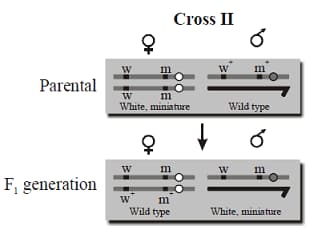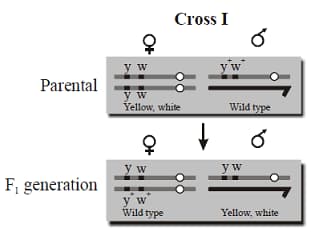EASY
Earn 100
Frequency of recombination between gene pairs on same chromosome as a measure of the distance between genes to map their position on chromosome, was used for the first time by
(a)Henking
(b)Thomas Hunt Morgan
(c)Sutton and Boveri
(d)Alfred Sturtevant
84.31% studentsanswered this correctly
Important Questions on Heredity and Variation
MEDIUM
HARD
MEDIUM
Given below are two statements one is labelled as: Assertion (A) and the other is labelled as Reason (R).
Assertion (A): Mendel's law of independent assortments does not hold good for the genes that are located closely on the same chromosome.
Reason (R): Closely located genes assort independently.
In light of the above statements, choose the correct answer from the options given below:
MEDIUM
EASY
EASY
HARD
MEDIUM
MEDIUM
EASY
EASY
MEDIUM
EASY
HARD


EASY
EASY
HARD
MEDIUM
| Cross | Result |
| Strain 1 × gg | All Grey type |
| Strain 2 × gg | 1 Grey : 1 ebony |
| Strain 3 × gg | All ebony type |
| Strain 4 × Gg | 3 Grey : 1 ebony |
Which strains have the genotype Gg ?
HARD


MEDIUM

